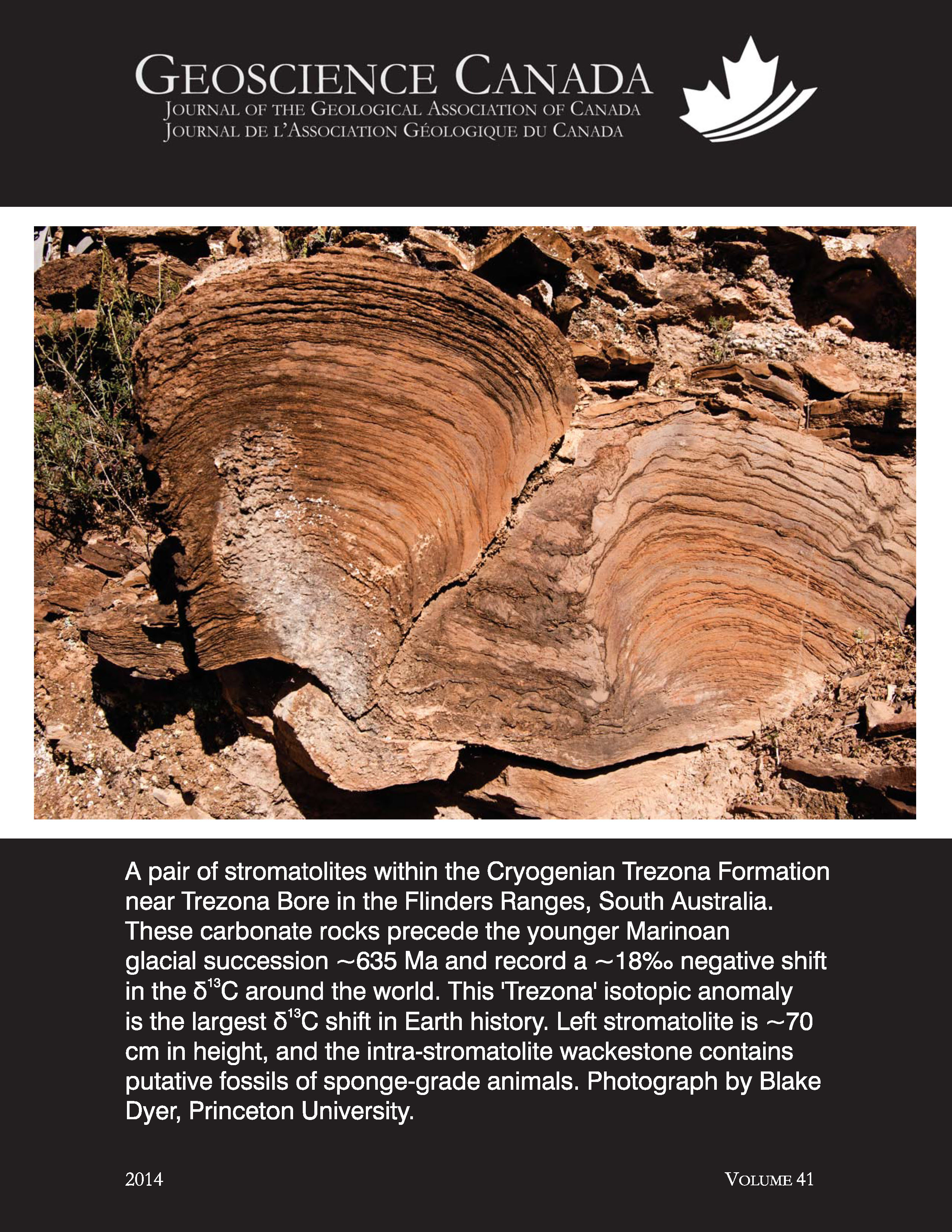A Comparison of Different Remotely Sensed Data for Classifying Bedrock Types in Canada’s Arctic: Application of the Robust Classification Method and Random Forests
Published 2014-12-03
How to Cite
Abstract
The Geological Survey of Canada, under the Remote Predictive Mapping project of the Geo-mapping for Energy and Minerals program, Natural Resources Canada, has the mandate to produce up-to-date geoscience maps of Canada’s territory north of latitude 60°. Over the past three decades, the increased availability of space-borne sensors imaging the Earth’s surface using increasingly higher spatial and spectral resolutions has allowed geologic remote sensing to evolve from being primarily a qualitative discipline to a quantitative discipline based on the computer analysis of digital images.
Classification of remotely sensed data is a well-known and common image processing application that has been used since the early 1970s, concomitant with the launch of the first Landsat (ERTS) earth observational satellite. In this study, supervised classification is employed using a new algorithm known as the Robust Classification Method (RCM), as well as a Random Forest (RF) classifier, to a variety of remotely sensed data including Landsat-7, Landsat-8, Spot-5, Aster and airborne magnetic imagery, producing predictions (classifications) of bedrock lithology and Quaternary cover in central Victoria Island, Northwest Territories. The different data types are compared and contrasted to evaluate how well they classify various lithotypes and surficial materials; these evaluations are validated by confusion analysis (confusion matrices) as well as by comparing the generalized classifications with the newly produced geology map of the study area. In addition, three new Multiple Classification System (MCS) methods are proposed that leverage the best characteristics of all remotely sensed data used for classification.
Both RCM (using the maximum likelihood classification algorithm, or MLC) and RF provide good classification results; however, RF provides the highest classification accuracy because it uses all 43 of the raw and derived bands from all remotely sensed data. The MCS classifications, based on the generalized training dataset, show the best agreement with the new geology map for the study area.
SOMMAIRE
Dans le cadre de son projet de Télécartographie prédictive du Programme de géocartographie de l’énergie et des minéraux de Ressources naturelles Canada, la Commission géologique du Canada a le mandat de produire des cartes géoscientifiques à jour du territoire du Canada au nord de la latitude 60°. Au cours des trois dernières décennies, le nombre croissant des détecteurs aérospatiaux aux résolutions spatiales et spectrales de plus en plus élevées a fait passer la télédétection géologique d’une discipline principalement qualitative à une discipline quantitative basée sur l'analyse informatique d’images numériques.
La classification des données de télédétection est une application commune et bien connue de traitement d'image qui est utilisée depuis le début des années 1970, parallèlement au lancement de Landsat (ERST) le premier satellite d'observation de la Terre. Dans le cas présent, nous avons employé une méthode de classification dirigée en ayant recours à un nouvel algorithme appelé Méthode de classification robuste (MRC), ainsi qu’au classificateur Random Forest (RF), appliqués à une variété de données de télédétection dont celles de Landsat-7, Landsat-8, Spot-5, Aster et d’imagerie magnétique aéroportée, pour produire des classifications prédictives de la lithologie du substratum rocheux et de la couverture Quaternaire du centre de l'île Victoria, dans les Territoires du Nord-Ouest. Les différents types de données sont comparés et contrastés pour évaluer dans quelle mesure ils classent les divers lithotypes et matériaux de surface; ces évaluations sont validés par analyse de matrices de confusion et par comparaison des classifications généralisées des nouvelles cartes géologiques de la zone d'étude. En outre, trois nouvelles méthodes par système de classification multiple (MCS) sont proposées qui permettent d’exploiter les meilleures caractéristiques de toutes les données de télédétection utilisées pour la classification.
Tant la méthode MRC (utilisant l'algorithme de classification de vraisemblance maximale ou MLC que la méthode RF donne de bons résultats de classification; toutefois c’est la méthode RF qui offre la précision de classification la plus élevée car elle utilise toutes les 43 les bandes de données brutes et dérivées de toutes les données de télédétection. Les classifications MCS, basées sur le jeu de données généralisées d’apprentissage, montrent le meilleur accord avec la nouvelle carte géologique de la zone d'étude.
